The Biography of Lady Fatima Masuma (A)
1.1 –  Predictions about this Noble Lady
Predictions about this Noble Lady
It is interesting to know that the Imams (A) foretold the birth of this noble lady and her presence in Qum many years before her birth.
Qādī Nūrullāh Shūshtarī (d. 1109 A.H) reports from the 6th Imam, Imam Ja`far al-Sādiq (A):
تُقبَض فيها امْراةٌ منْ وُلْدى، اِسْمُها فاطِمَةُ بِنْتُ مُوسى، وتَدْخُلُ بِشَفاعَتِها شيعَتى الجنّة بَاجْمَعِهِمْ
“A lady from my children whose name will be Fatima, daughter of Mūsā, will die in Qum. On the Day of Judgement this lady will intercede for all my Shi`a to enter Heaven.”1
`Allāmah Majlisī narrates from Imam al-Sādiq (A):

وَسَتُدْفَنُ فيها امْرَأةٌ مِنْ اَوْلادى تُسَمّى فاطِمَةَ، فَمَنْ زارَها وَجَبَتْ لَهُ الجنّة
“A lady from my children, by the name of Fatima will be buried in Qum. Whoever visits her [shrine], will certainly be admitted to Heaven.”2
The writer of the above tradition says that Imam al-Sādiq (A) gave these glad tidings even before the birth of his son, the 7th Imam, Imam Mūsā al-Kāđim (A), the father of Lady Fatima Masuma (A).
Since Imam al-Kāđim (A) was born in 128 A.H and Lady Fatima Masuma (A) in 173 A.H; this speech was made at least 45 years before her birth. Therefore, the good news of her birth was foretold more than 45 years before she was born!
1.2 – The date of her birth
According to certain traditions, some of which are mentioned below, Lady Fatima Masuma (A) was born on the 1st of Dhul Qa`dah, 173 A.H in Madina.
1. The narrator Ayatollah Shaykh Ali Namāzī (d. 1405 A.H) writes:“Fatima Masuma was born at the beginning of the month of Dhul Qa`dah in the year 173 A.H”3
2. Mullā Muhsin Fayd narrates:
“Lady Fatima [Masuma], daughter of Imam al-Kāđim (A) was born in Madina at the beginning of the month Dhul Qa`dah in the year 173 A.H and she passed away in Qum on the 10th of the month Rabī` al-Thānī in the year 201 A.H.4
Others who have also written that the birth of Lady Fatima Masuma (A) is in the beginning of the month of Dhul Qa`dah are mentioned below:
1. `Allāmah Bahrānī in his book `Awālim al-`Ulūm, vol. 21, p. 328.
2. Shaykh Mahdi Mansūrī in his book Hayāt Al-Sadāt, p. 10.
3. Dr. Muhammad Hādī Amīnī in his book Fātimah Bint al-Imam Mūsā al-Kāđim, p. 21.
4. Ahmad Zādeh in his book Zendegānī Hadrat Mūsā Ibn Ja`far, vol. 2, p. 375.
Some of the authors above have recorded the year of the birth of Lady Fatima Masuma (A) as 183 A.H instead of 173 A.H, but this is incorrect on account of two major points, which are:
i. If we study the details of Imam Mūsā al-Kāđim’s (A) life we see that on the 25th Rajab 183 A.H he died in prison in Baghdad. We also know the minimum amount of time that he spent in prison was four years and during this imprisonment, his family was in Madina. So it cannot be possible for Lady Fatima Masuma (A) to be born in this same year of 183 A.H.
ii. Also, it is well documented that Imam al-Kāđim (A) had more than one daughter named Fatima, and that Lady Fatima Masuma (A) was the eldest Fatima (Fātimat al-Kubrā), therefore she could not have been born in the same year as the year of her father’s death.
From the foregoing, it can be seen that it is not possible that Lady Fatima Masuma (A) was born in the year 183 A.H, and the authors who have quoted this date have made a mistake, (either in counting or writing) and should have recorded 173 A.H.
1.3 – The date of her death
There is no difference of opinion about the fact that Lady Fatima Masuma (A) died in Qum in the year 201 A.H. The year of her death is further corroborated by the tiles in her shrine, dating back from centuries ago, which have the same date written on them.5
However, there are various possibilities about the month and day of her death:
1. 10th Rabī` al-Thānī6
2. 12th Rabī` al-Thānī7
3. 8th Sha`bān8
There is no evidence to say which of the three dates is correct, and so the scholars have decided that because the first and the second dates are so close together, the mourning for the death of this noble lady should be over a three day period (10th, 11th and 12th of Rabī` al-Thānī).
This three day period is called: “ايّام معصوميّة” – “the days of Masuma”.
Lady Fatima Masuma (A) was about 28 years old when she died, although some scholars have said that at the time of her death her age was 18 (from the mistake of the year of her birth – 183 A.H instead of 173 A.H) and others have said her age was 23, but this last narration is not very reliable, due to its weak chain of transmission.
1.4 – Her father
The father of Lady Fatima Masuma (A) was the 7th Imam – Imam Mūsā al-Kāđim (A). It has been recorded in history that Imam al-Kāđim (A) had numerous children.
Shaykh Mufīd (d. 413 A.H) writes that Imam al-Kāđim (A) had 37 children (whom he has named), 19 sons and 18 daughters; and that two of these daughters were named Fatima – Fatima al-Kubrā and Fatima al-Sughrā.9
Sibt ibn Jawzī, the famous 8th century scholar of the Ahl al-Sunnah, narrates that four daughters of Imam al-Kāđim (A) were named Fatima: Fatima al-Kubrā, Fatima al-Wustā, Fatima al-Sughrā and Fatima al-Ukhrā.10
Fatima al-Kubrā is the very same Lady Fatima Masuma (A) buried in Qum.
It is narrated that Fatima al-Wustā is buried in Isfahān and her Haram is called Sittī Fatima (near Chāhār Sūq Shīrāzī-hā).
Fatima al-Sughrā is well known as “Bībī Heybat”. She is buried in Azerbaijan,11 where the beautiful dome and gardens at her shrine were destroyed during the era of Communist Russia.
Fatima al-Ukhrā, who is also known as Fatima Tāhira, is buried in Rasht, Iran.12
The contemporary researcher, `Allāmah Shaykh Muhammad Taqī Tustarī writes: Amongst all the children of Imam al-Kāđim (A), other than Imam Ali al-Ridā (A) there was no one equal in status to Lady Fatima Masuma (A).13
In 173 A.H, Hārūn al-Rashīd became the Caliph. Six years later, on the 20th Shawwāl 179 A.H, he ordered Imam al-Kađim (A) to be arrested in Madina. At the time of his arrest, Imam (A) was in the state of prayers in the Prophet’s (S) mosque. After his arrest, he was brought to Iraq, where he was imprisoned in the dungeons of Baghdad. This is where the Imam (A) spent the rest of his life.
Hārūn had the Imam (A) poisoned, and he died in the prison of Baghdad on the 24th or the 25th of Rajab in the year 183 A.H. He is buried in the “Maqābir Quraysh” which is now known as Kāđimayn, because the 9th Imam – Imam Muhammad al-Taqī (A) is also buried there.14
From the dates above, we can conclude that the Imam (A) was in prison for four years. However, some historians have quoted that his time in prison was seven years, and Ibn Jawzī has mentioned that it was eleven years.15
1.5 – Her mother
The mother of Lady Fatima Masuma (A) was also the mother of the 8th Imam – Imam Ali al-Ridā (A) and she had no children other than these two.
She was known by several names, the most well known of them was Najmah Khātūn.16
Lady Najmah was a slave from North Africa and was bought by Lady Hamīdah, the mother of Imam al-Kāđim (A). After she came into the house of the Ahl al-Bayt (A), she reached a high level of intellectual and spiritual excellence, with lessons and teachings from Lady Hamīdah.
Lady Hamīdah narrates that one night she had a dream, where she saw the Prophet (S) and he said to her: ‘Make Najmah the wife of your son, Mūsā ibn Ja`far, so that soon the best of people in the world (Imam al-Ridā (A)) will be born from her.17 Lady Hamīdah acted upon this order, and so Najmah became the wife of Imam al-Kāđim (A) and later, the mother of Imam al-Ridā (A) and Lady Fatima Masuma (A).
Some of the other names mentioned for Lady Najmah are:
Tuktam: This was a popular name amongst the Arabs, and it was the name of the mother of Imam al-Ridā and Lady Fatima Masuma (A) at the time when she was bought as a slave.
The name Tuktam was also used to refer to the well of Zamzam (the well near the Ka`bah) in the dream of Abdul Muttalib, when he was told to dig up and find the hidden well, and in this way it seems a very appropriate name for Najmah Khātūn whose excellence was also hidden at the time of her slavery.18
Umm al-Banīn: This was the only title that was given to her; the meaning of this title is the “mother of boys” although Najmah Khātūn only had two children – Imam al-Ridā (A) and Lady Fatima Masuma (A). Due to the nobleness of both of her children, she had this title “Umm al-Banīn” given to her.19
Tāhira: It has been narrated that after giving birth to Imam Ali al-Ridā (A) on 11th Dhul Qa`dah in the year 148 A.H in Madina, she was known as Tāhira, which has the meaning of purity.20
Although Lady Fatima Masuma (A) was born 25 years after Imam al-Ridā (A), the fact that they had the same mother and father, led to a special closeness between them.
1.6 – The names and titles of Lady Fatima Masuma (A)
It has been emphasised in many traditions that the choosing of a suitable name for a child is the responsibility of the father.21 The recommendation is that, if the child is a boy, then the name of the Prophet (S) and the Imams (A), especially the names Muhammad and Ali should be chosen for him.22 And for a daughter there is no name more suitable than Fatima.23
The Imams (A), due to their high esteem of Lady Fatima Zahra (A) would accord great respect and reverence to the name ‘Fatima’. So much so, that when one of his companions informed Imam al-Sādiq (A) that he had chosen the name Fatima for his daughter, the Imam (A) exclaimed: “Ah, Ah.” Then he said: “Now that you have kept her name Fatima, be careful not to ever curse or beat her.”24
And it was due to this respect that the Imams (A) would name their children by these holy names, and usually more than one child had the fortune to have such a noble name. Especially so in the case of Imam al-Kāđim (A), who named four of his daughters Fatima, as mentioned previously. We know that the name of Lady Fatima Masuma (A) was Fatima (al-Kubrā).
Masuma: The title of Masuma was given to this noble lady by her brother, Imam al-Ridā (A). It is worth noting that this title was awarded to her after her death and she was not referred to by this name during her life-time. This also nullifies the erroneous view that she died after her brother, Imam al-Ridā (A), on hearing the news of his death.
Mirzā Muhammad Taqī (d. 1297 A.H) reports that the title “Masuma” was given to her by her brother – Imam al-Ridā (A). And according to this tradition Imam al-Ridā (A) said:
مَنْ زارَ الْمَعْصومَةَ بِقُمْ كَمَنْ زارَني
“Whoever visits Masuma in Qum is like the one who has visited me.”25
The question arises, was this title “Masuma” given to her to indicate her sinless status? In other words, was she infallible in the same sense as the 14 Ma`sūmīn (The Prophet, Lady Fatima Zahra and the 12 Imams – peace be upon them all), who are considered sinless and Divinely protected according to the verse of Purity:
إِنَّمَا يُرِيدُ اللَّهُ لِيُذْهِبَ عَنكُمُ الرِّجْسَ أَهْلَ الْبَيْتِ وَيُطَهِّرَكُمْ تَطْهِيرًا
“Verily, Allah intends to keep all uncleanliness away from you, O Ahl al-Bayt, and to purify you thoroughly.”26
Several scholars believe that some of the noble personalities from the household of the Prophet (S), such as Lady Zaynab (A), Hadrat `Abbās (A) and Lady Fatima Masuma (A), due to their proximity to the Ma`sūmīn (A) have acquired a high state of purity.
Infallibility (al-`ismah) has two meanings: Infallible from error and infallible from sin. When speaking of the infallibility of the Ma`sūmīn (A), both these meanings apply, but when speaking about special and noble people, such as Lady Zaynab (A), Hadrat `Abbās (A) or Lady Fatima Masuma (A), the latter meaning of infallible from sin is meant.
Here we do not have the space to discuss this issue, but we can mention that the Imams (A) never falsely praised anyone, and the fact that the Imam al-Ridā (A) gave the title of Masuma to his sister is proof that she deserved such a title.
Karīmat Ahl al-Bayt: This title, meaning “the Noble one of the family of the Prophet (S)” was given to her by either Imam al-Bāqir (A) or Imam al-Sādiq (A) in a dream seen by Ayatollah Sayyid Mahmūd Mar`ashī Najafī, the author of Mashjirat al-`Ālawīyīn.
This noble man was very interested in finding the exact location of the burial place of Lady Fatima Zahra (A), and for this purpose he spent 40 days supplicating, so that he could be privileged with this information.
On the 40th night, after the completion of his prayers, he went to sleep and in his dream he saw himself present at the grave of either Imam al-Bāqir (A) or Imam al-Sādiq (A) (both of whom are buried in Jannat al-Baqī` in Madina). Imam (A) said to him:
عَلَيْكَ بِكَريمَـةِ اَهْـلِ الْبَيْتِ
“I advise you to go to the Karīmat (Noble one)
of the Ahl al-Bayt”
He thought that by Karīmat Ahl al-Bayt, Imam (A) was referring to Lady Fatima Zahra (A), and so he answered, “Yes, I have been supplicating for this very purpose, so that I may know the exact place of the holy grave of this noble personality, enabling me to perform her pilgrimage.”
The Imam (A) said, “I meant the holy grave of Lady Fatima Masuma (A) in Qum.” Then the Imam (A) added, “It is Allah’s desire that the location of the holy grave of Lady Fatima Zahra (A) be hidden from everyone.”
Therefore, the Imam (A) has placed the grave of Lady Fatima Masuma (A) in place of the grave of Lady Fatima Zahra (A), and so all the honour and grandeur that would have been accorded to the grave of Lady Fatima Zahra (A) should be given to the grave of Lady Fatima Masuma (A).
On waking from his dream, the late Mar`ashī made an intention to travel to Qum with his family, in order to perform the pilgrimage of Lady Fatima Masuma (A) and he carried out this intention without any delay.27 He died in Najaf, in the year 1338 A.H.
Grand Ayatollah Sayyid Shahāb al-Dīn Marashī Najafī, the illustrious son of the late Mar`ashī, migrated to Iran in the year 1342 A.H. He often cited that one of the reasons for his emigration to Iran was the dream of his father.
After a short stay in Tehran, he entered the seminary in Qum, al-Hawzah al-‘Ilmīyah, in the year 1343 A.H, and here he lived, in the proximity of the Karīmat of Ahl al-Bayt – Lady Fatima Masuma (A) – until his death in the year 1411 A.H.
For over sixty years, every morning, the late Shahāb al-Dīn Mar`ashī, was the first person to perform the pilgrimage of this noble lady. He would wait outside her shrine for the doors to be opened.
Even during his final illness before his death, he requested to be carried to her shrine in order to perform her pilgrimage.
Other titles that have been given to Lady Fatima Masuma (A) are:
1. Tāhirah 6. Naqīyah
2. Hamīdah 7. Rādīyah
3. Bārrah 8. Mardīyah
4. Rashīdah 9. Sayyidah
5. Taqīyah 10. Ukht al-Ridā.
All of these ten titles can be found in her salutation (Ziyārat), which has been narrated by Shaykh Muhammad Ali Qummī in his book, Anwār al-Musha`sha`īn. This salutation for Lady Fatima Masuma (A) is other than the more famous one that has been narrated by `Allāmah Majlisī in Bihār al-Anwār, quoting from Imam al-Ridā (A).
1.7 – The high status of Lady Fatima Masuma (A)
In the salutation (Ziyārat) of Lady Fatima Masuma (A) which has been narrated from Imam al-Ridā (A) (the salutation is quoted in the final chapter of this book), one reads:
وَاَنْ لا يَسْلُبَنا مَعْرِفَتَكُمْ اِنَّهُ وَلىُّ قَديرٌ
“(We ask from Allah) not to deprive us from understanding your status. Indeed, He is the Protector and has Power over everything.”
And so in this chapter we will attempt to understand something of the great status of this noble lady. Some traditions that are indicative of her status are mentioned below:
1. The authentic tradition from Imam al-Ridā (A):
مَنْ زارَ الْمَعْصومَةَ بِقُمْ كَمَنْ زارَنى
“Whoever visits Masuma in Qum is like the one who has visited me.”28
This tradition implies that the rewards and benefits awarded to a pilgrim are the same whether he does the pilgrimage of Lady Fatima Masuma (A) or Imam al-Ridā (A). Also, from this tradition, as discussed previously, we get the title of Masuma (infallible) that was given to this noble lady by Imam (A) himself.
1. The authentic tradition from Imam al-Sādiq (A):
وَسَتُدْفَنُ فيها امْرَأةٌ مِنْ اَوْلادى تُسَمّى فاطِمَةَ، فَمَنْ زارَها وَجَبَتْ لَهُ الجنّة
“A lady from my children, by the name of Fatima will be buried in Qum. Whoever visits her [shrine], will certainly be admitted to Heaven.”29
This narration also illustrates the high status of this noble lady, because her pilgrim is ensured entry into Heaven.
3. Another authentic tradition from Imam al-Sādiq (A):
تُقبَض فيها امْراةٌ منْ وُلْدي، اِسْمُها فاطِمَةُ بِنْتُ مُوسى، وتَدْخُلُ بِشَفاعَتِها شيعَتي الجنّة بَأجْمَعِهِمْ
“A lady from my children whose name will be Fatima, daughter of Mūsā, will die in Qum. On the day of Judgement this lady will intercede for all my Shi`a to enter Heaven.”30
This narration indicates the honour and position of Lady Fatima Masuma (A), who will be the means of intercession of the Shi`a of the Ahl al-Bayt (A) on the Day of Judgement.
Although there have been other traditions by the Imams (A) stating that, through the intercession of the scholars and the martyrs, people will enter Heaven, never has a non-Ma`sum been specifically named for this intercession, as in the case of Lady Fatima Masuma (A).
4. The Ziyārat to Lady Fatima Masuma (A) that we have in our hand today has been narrated from Imam al-Ridā (A). Interestingly, no other non-Ma`sum has had an Imam dictate the text and manner of their Ziyārat other than Lady Fatima Masuma (A).
Also, because we know that this Ziyārat has been narrated by the Imam (A) through a reliable tradition, the virtues of Lady Fatima Masuma (A) within it must be considered true.
Some extracts from her Ziyārat are discussed here as an example:
i. In this Ziyārat, she is called:
the daughter of the Prophet of God,
the daughter of Fatima and Khadījah,
the daughter of Amīr al-Mu’minīn Ali,
the daughter of Hasan and Husain,
the daughter of the Vicegerent of God (al-Kāđim),
the sister of the Vicegerent of God (al-Ridā),
and the aunt of the Vicegerent of God (al-Jawād)
(may the blessings of Allah be on all of them).
That portion from her Ziyārat is reproduced below:
السلام عليك يا بنت رسول الله
Peace be on You, O Daughter of the Messenger of Allah!
السلام عليك يا بنت فاطمة وخديجة
Peace be on you, O Daughter of Fatima and Khadījah!
السلام عليك يا بنت امير المؤمنين
Peace be on you, O Daughter of the
Commander of the Faithful!
السلام عليك يا بنت الحسن والحسين
Peace be on you, O Daughter of Hasan and Husain!
السلام عليك يا بنت وليّ الله
Peace be on you, O Daughter of the Vicegerent of Allah!
السلام عليك يا أخت وليّ الله
Peace be on you, O Sister of the Vicegerent of Allah!
السلام عليك يا عمّة ولىّ الله
Peace be on you, O Aunt of the Vicegerent of Allah!
The above relation given of Lady Fatima Masuma (A) shows the honourable family that this noble lady comes from and also her nobility due to being a ‘true’ child of the Prophet (S), Lady Khadījah al-Kubrā, Lady Fatima Zahra (A) and the Pure Imams (A).
ii. In this Ziyārat, Imam al-Ridā (A) refers us to her for intercession, due to her nearness, status and special esteem in the eyes of Allah.
يا فاطمة ٱشفعي لي في الجنّة فانّ لك عند الله شأناً مّن الشّأن
O Fatima! Intercede for me, so that I enter Heaven, for indeed you have a great status in the eyes of Allah. 31
The intercession of this noble lady in the matter of our entrance to Heaven has been mentioned before in the authentic traditions from Imam al-Sādiq (A) and in the salutation taught by Imam al-Ridā (A).32
5. One of the noble qualities attributed to Lady Fatima Zahra (A) was that her father, the Prophet (S) would say about her:
فِدَاهَا اَبُوهَا
“May her father be sacrificed for her.”33
This phrase was also used in reference to Lady Fatima Masuma (A) by her father, Imam al-Kāđim (A).34
This statement is indeed worthy of attention because:
i. it compares the status of Lady Fatima Masuma (A) to that of Lady Fatima Zahra (A), since it is the same phrase that the Prophet (S) also used.
ii. the statement itself comes from an Imam (A) and that further emphasises the status of Lady Fatima Masuma (A).
1. The shrine of Lady Fatima Masuma (A) is equivalent to the shrine of Lady Fatima Zahra (A).35
7. The coming of the two men, whose faces were not clearly seen, at the time of the burial of Lady Fatima Masuma (A). These two men, who are believed to have been Imam al-Ridā (A) and Imam al-Taqī (A), buried the noble lady.36
An infallible is always buried by an infallible. This incident in itself does not necessarily prove that Lady Fatima Masuma (A) was infallible, because the Imams (A) would take part in the burial rituals of many of their followers. However, it does indicate her high status, and the fact that the Imams (A) came from afar and took over the responsibility of her burial is worth noting.
8. The number of traditions from the Imams (A) on the virtues of Qum, (mentioned in section 4.5), due to the fact that this noble lady is buried here. There is no other place where a non-Ma`sum is buried, that has been mentioned so numerously.
9. The number of miracles, that have been narrated by scores of people, in different generations (mentioned in section 3.11) has not occurred in any other place where a Prophet (S) or Imam (A) is not buried, except for the shrine of Hadrat `Abbās (A) in Karbalā and Lady Zaynab (A) in Damascus.
10. The authentic traditions that have been narrated by this noble lady (mentioned in section 1.9) show her high degree of knowledge of the various Islamic sciences and the teachings and merits of the family of the Prophet (S), in addition to her other qualities.
1.8 – Why did Lady Fatima Masuma (A) not marry?
It is almost certain that Lady Fatima Masuma (A) did not marry. The question arises “Why?”
We know that marriage is a highly desirable and recommended act in Islam and in regards to marriage, some of the traditions of the Prophet (S) are quoted below:
ما بُنيَ فِى الْاِسْلامِ بِناءٌ اَحَبُّ اِلَى اللهِ عَزَّ وَجَلَّ وَاَعَزُّ مِنَ التَّزويجِ
There is no institution more honourable and beloved to Allah, than marriage.37
النِّكاحُ سُنَّتِي، فَمَنْ رَغِبَ عَنْ سُنَّتِي فَلَيْسَ مِنِّي
Marriage is part of my Sunnah (practice) and whoever disregards my Sunnah is not from me.38
It has been narrated that in the time of the 5th Imam, Imam al-Bāqir (A), a certain woman did not marry for the sake of honour, self discipline and gaining nearness to Allah. The Imam (A) told her: “If the abandonment of marriage gave a person more honour, then Lady Fatima Zahra (A) would not marry, for there is no woman purer and more honourable than her.39
Therefore, we can be sure that there must have been a good reason for Lady Fatima Masuma (A) not marrying. Two possible reasons are cited below:
The first reason may be due to the fact that, the daughters of Imam al-Kāđim (A), especially Lady Fatima Masuma (A), were women of great distinction and to find husbands who would be compatible to them was not easy. Imam al-Kāđim (A) had therefore recommended them to take the advice and opinion of Imam al-Ridā (A) in matters such as marriage, due to his own inaccessibility while he was imprisoned by Hārūn.40
The fact that there were no suitable spouses present for the daughters of the Ahl al-Bayt (A), does not seem so far-fetched when we consider the tradition from Imam al-Sādiq (A) in reference to Lady Fatima Zahra (A):
لولا أنّ الله تبارك وتعالى خلق أمير المؤمنين لفاطمة
ما كان لها كفو على ظهر الارض من آدم ومن دونه.
“If God had not created the Commander of the Faithful [Ali] for Fatima, then there would not have been a suitable husband for her in the whole world from the time of Adam to the end of mankind.”41
The second reason is that the fear and anxiety caused by Hārūn’s government at that time was such that no-one dared to get close to the family of the Ahl al-Bayt (A).
To marry one of the daughters of Imam al-Kāđim (A), and become his son in-law was considered too dangerous.
This was one of the many sad difficulties that Imam’s (A) family faced, due to the tyranny of the rulers of their time.42
We cannot determine with certainty why Lady Fatima Masuma (A) did not marry, however, we can be sure it was not due to the abandonment of marriage as a personal choice.
1.9 – Lady Fatima Masuma (A) as a narrator of traditions
One of the qualities of Lady Fatima Masuma (A) was her considerable knowledge of the various Islamic sciences and the teachings and merits of the family of the Prophet (S). She is counted amongst the highest rank of reliable narrators of traditions.
Unfortunately, due to the oppressive rulers at her time, there was great restriction in narrating anything from the Ahl al-Bayt (A) and so a lot of material has been lost.
Some of the traditions (ahādīth) which have been narrated by this noble lady, that have reached us, are given below, with their chain of transmission (sanad).
1. The tradition of Ghadīr and the tradition of Manzilat
حدثتنا فاطمة وزينب وامّ كلثوم بنات موسى بن جعفر، قلن حدثتنا فاطمة …بنت جعفر بن محمد الصادق، حدثتني فاطمة بنت محمد بن علي، حدثتني فاطمة بنت علي بن الحسين، حدثتني فاطمة وسكينة ابنتا الحسين بن علي، عن أم كلثوم بنت فاطمة بنت النبي، عن فاطمة بنت رسول الله (ص) قالت :
أنسيتم قول رسول الله (ص) يوم غديرخم: مَنْ كُنْتُ مَوْلاهُ فَعَلِيٍّ مَوْلاهُ
وقوله (ص): اَنْتَ مِنِّي بِمَنْزِلَةِ هارُونَ مِنْ مُوسى
The daughters of Imam al-Kāđim (A), Fatima (Masuma), Zaynab and Umm Kulthūm have narrated to me:
Fatima daughter of Imam al-Sādiq (A), narrated to us:
Fatima daughter of Imam al-Bāqir (A) narrated to me:
Fatima daughter of Imam al-Sajjād (A) narrated to me:
Fatima and Sakinah, daughters of Imam Husain (A) narrated to me:
Umm Kulthūm daughter of Lady Fatima Zahra (A) narrated to us, from her mother, the daughter of the Prophet (S) that she said:
“Have you forgotten the words of the Prophet of God on the day of Ghadīr Khum, when he said: ‘Whosever’s leader I am, then Ali is also their leader’, and his words, to Ali (A) ‘Your relationship to me is like the relationship of Hārūn to Mūsā.’”43
2. With the same chain of narrators as above, Lady Fatima Masuma (A) narrates from Lady Fatima Zahra (A):
“I heard from my father, the Prophet (S), who said:
‘When I went to Mi`rāj (ascension to the Heavens), I entered Heaven, and there I saw a palace made of white pearls, the door of that palace was decorated with pearls and rubies, and on that door was hanging a curtain.
I raised my head towards it and saw written on the door:
لا اِلهَ اِلا اللهُ، مُحَمَّدٌ رَسُولُ اللهِ، عَلِيٌّ وَلِيُّ القَوْمِ
“There is no God but Allah, Muhammad is the Messenger of Allah, Ali is the Guardian of the community.”
I then looked at the curtain and on that was written:
بَخٍّ بَخٍّ مَنْ مِثْلُ شِيعَةِ عَلِىٍّ؟
“Ah, ah! Who is like the Shi`a of Ali?”
I entered the palace, in it I saw a castle, made of red ‘Aqīq. It had a door of silver, decorated with green topaz and on that door was hanging a curtain.
I raised up my head and saw written on that door:
مُحَمَّدٌ رَسُولُ اللهِ، عَلِيٌّ وَصِيُّ الْمُصْطَفى
Muhammad is the Messenger of Allah, Ali is the Successor of Mustafā.”44
3. Lady Fatima Masuma (A), through a reliable chain, has narrated from Safīyah, the daughter of `Abd al-Muttalib, [the paternal aunt of the Prophet (S)], who relates:
عن صفية بنت عبد المطّلب قالت: لمّا سقط الحسين (ع) من بطن امّه وكنت وليتها قال رسول الله (ص) يا عمة هلمّي اليّ ابني فقلت يا رسول الله اناّ لم ننظفّه بعد. فقال (ص) يا عمة انت تنظّفينه انّ الله تبارك وتعالى قد نظّفه وطهّره
“When Imam Husain (A) was born and I was attending to his mother, the Prophet (S) said to me: Oh aunt ! Bring my child to me. I said: I have not yet washed him [to make him Tāhir (clean)]”. He said: “Oh aunt ! Do you want to wash him, when God the Most High has washed him and made him pure?”45
4. It is narrated that:
عن فاطمة بنت موسى بن جعفر، عن فاطمة بنت الصادق جعفر بن محمد، عن فاطمة بنت الباقر محمد بن علي، عن فاطمة بنت السجاد علي بن الحسين زين العابدين، عن فاطمة بنت ابي عبدالله الحسين، عن زينب بنت أمير المؤمنين، عن فاطمة بنت رسول الله (ص)، قالت قال رسول الله (ص):
اَلا مَنْ ماتَ عَلى حُبِّ آلِ مُحَمَّدٍ ماتَ شَهِيداً
Fatima (Masuma) daughter of Imam al-Kāđim,
narrates from Fatima daughter of Imam al-Sādiq,
who narrates from Fatima daughter of Imam al-Bāqir,
who narrates from Fatima daughter of Imam al-Sajjād,
who narrates from Fatima daughter of Imam Husain,
who narrates from Zaynab daughter of Imam Ali,
who narrates from Lady Fatima Zahra daughter of the Prophet of God,
who has narrated that the Prophet (S) has said:
“Know that whoever dies having the love of the family of Muhammad, dies a martyr (shahīd).”46
From the above traditions, narrated by Lady Fatima Masuma (A) with a reliable chain of narrators, we see that not only the men folk of the family of the Prophet (S) narrated traditions from the Prophet (S), but also the women of this family had a role in narrating his traditions.
1.10 – The influence of Imam al-Kāđim (A) and Imam al-Ridā (A) on Lady Fatima Masuma (A)
According to authentic traditions, during the year 179 A.H, Imam al-Kāđim (A) was arrested on the orders of Hārūn (the 5th Abbasid Caliph) and taken from Madina to Baghdad via Basra. In Baghdad, he was imprisoned and he remained in prison until his death in the year 183 A.H.
This separation of Lady Fatima Masuma (A) from her father was very difficult for her. She longed to see her father again but this was not to be, because the family of the Imam (A) learnt of his death within the prisons of Baghdad about 4 years later.
From the time of the imprisonment of her father, Lady Fatima Masuma (A) was under the guardianship of her brother, Imam al-Ridā (A), who was 25 years older than her. This lasted until the year 200 A.H, when he was summoned to Khurāsān by Ma’mūn.
This guardianship was according to the will of their father, Imam al-Kāđim (A).
In the beginning of the will of Imam al-Kāđim (A), after mentioning the guardianship of Imam al-Ridā (A) for his wives and daughters, the following was written:
وَاِنْ اَرادَ رَجُلٌ مِنْهُمْ اَنْ يُزَوِّجَ اُخْتَهُ،
فَلَيْسَ لَهُ اَنْ يُزَوِّجَها اِلاَّ بِاِدْنِهِ وَاَمْرِهِ
“…and if anyone of the brothers wants his sister to get married, he must get his (Imam al-Ridā’s) permission…”47
Imam al-Ridā (A) was not only instructed to be the guardian of Lady Fatima Masuma (A) but also that of all the wives and daughters of Imam al-Kāđim (A).
Fatima Masuma (A) spent the first six years of her life by the side of her noble father, which she utilised to the maximum, learning all she could from him.
Even as a child her level of knowledge and spiritual awareness was very high, as seen from a report by the late Ayatollah Sayyid Nasrullāh Mustanbit,48 who reported that there were some manuscripts found in the Shūshtarī libraries in the Holy city of Najaf, that had the following tradition written on them:
“One Friday, a number of Shi`a went to Madina to meet Imam al-Kāđim (A) to get some questions answered. But when they reached the house of the Imam (A), they were informed that he was away on a journey.
They decided to write their questions on a piece of paper and entrust this to the family of the Imam (A), so that when he returned from his journey he could answer the questions.
After a few days in Madina, the Shi`a decided to return home. Before their homeward journey, they passed by Imam’s (A) house to say their farewells and here they were given their paper back with all their questions answered. The replies to their queries had been provided by Lady Fatima Masuma (A), who at the time was only six years old.
They left Madina satisfied with the answers. On their journey home, they happened to meet Imam al-Kāđim (A), who was returning to Madina. They related to the Imam (A) the events that had occurred.
The Imam (A) asked to see the paper with the questions answered by Lady Fatima Masuma (A). After studying her replies and finding all the questions answered so correctly and eloquently by his young daughter, the Imam (A) remarked:
فِدَاهَا اَبُوهَا
May her father be sacrificed for her.
Imam (A) repeated this phrase three times.49
This same phrase had also been used by the Prophet (S) for Lady Fatima Zahra (A). 50
The tradition above demonstrates the special giftedness of Lady Fatima Masuma (A), even as a child. It comes as no surprise, therefore, when we read in her Ziyārat – which was dictated by Imam Ali Ridā (A), the following:
اَلسَّلامُ عَلَيْكِ يا فاطِمَةُ بِنْتَ موسَى بْنِ جَعْفَرٍ وَحُجَّتِهِ وَاَمينِهِ
Salutations to you, Oh Fatima, daughter of Mūsā ibn Ja`far, the proof (hujjah) and trusted one (amīn).51
After benefiting for six years from the guardianship of her father, Lady Fatima Masuma (A) was then under the supervision of her brother for another 21 years. She took advantage of the opportunity to learn under another Imam (A).
Indeed, she acquired such a high spiritual level that, after her passing away, her brother gave her the title of “Masuma” (the infallible). This was high praise indeed, especially from an Imam (A).
The Holy Shrine of Lady Fatima Masuma (A) in Qum
References
1. Bihār al-Anwār, vol. 60, p. 228; Majālis al-Mu’minīn, vol. 1, p. 83.
2. Bihār al-Anwār, vol. 48, p. 317 & vol. 60, p. 216 & vol. 102, p. 266.
3. Shaykh `Alī Namāzī, Mustadrak Safīnat al-Bihār, vol. 8, p. 257.
4. `Abbās Faid, Ganjīne-ye Athār-e Qum, vol. 1, p. 386.
5. Hasan ibn Muhammad Qummī, Tārikh-e Qadīm-e Qum, p. 213; Bihār al- Anwār, vol. 48, p. 290; Sayyid Muhsin Jabal `Āmilī, A`yān al-Shī`a, vol. 8, p. 391; Shaykh `Abbās Qummī, Muntahā al-Āmāl, vol. 2, p. 242; Sayyid Hasan al-Amīn, Dā’irat al-Ma`ārif, vol. 3, p. 231.
6. Mīr Abū Tālib Tabrīzī, Wasīlat al-Ma`sūmīn, p. 65; Sayyid Mahdī Mansūrī, Zindagāni-ye Hadrat-e Ma`sūma, p. 37, `Alī Akbar Mahdīpūr, Zindagāni-ye Karimah-ye Ahl al-Bayt, p. 105.
7. Mustadrak Safīnat al-Bihār, vol. 8, p. 257.
8. Shaykh Hurr ‘Āmilī, Risālat al-`Arabīyah al-‘Alawīyah, p. 11.
9. Shaykh Mufīd, Al-Irshād, Chapter on the life of Imam al-Kāđim (A).
10. Sibt ibn Jawzī, Tadhkirat al-Khawāss, p. 315.
11. Bihār al-Anwār, vol. 48, p. 317.
12. Ibid.
13. Shaykh Muhammad Taqī Tustarī, Tawārīkh al-Nabī wa al-Āl, p. 65.
14. Usūl al-Kāfī, vol. 1, p. 476; Al- Irshād, vol. 2, p. 215; `Alī bin Husain Mas`ūdī, Ithbāt al-Wasīyah, p. 161–169.
15. Tadhkirat al-Khawāss, p. 314.
16. Shaykh adūq, `Uyūn Akhbār al-Ridā, vol. 1, p. 14; Shaykh Tabarsī, I`lām al-Warā, p. 302; Shaykh Hurr ‘Āmilī, Ithbāt al-Hudāt, vol. 3, p. 233.
17. `Uyūn Akhbār al-Ridā, vol. 1, p. 17.
18. `Uyūn Akhbār al-Ridā, vol. 1, p. 14; I`lām al-Warā, p. 302; Ithbāt al-Hudāt, vol. 3, p. 233.
19. Usūl al-Kāfī, vol. 1, p. 486; `Uyūn Akhbār al-Ridā, vol. 1, p. 14; I`lām al-Warā, p. 302; Al-Irshād, vol. 2, p. 247.
20. Bihār al-Anwār, vol. 49, p. 4; `Uyūn al-Akhbār al-Ridā, vol.1, p. 14; Ithbāt al-Hudāt, vol.3, p. 233; Muhammad Ridā Hakīmī, A`yān al-Nisā’, p. 76.
21. Shaykh Muhammad bin Ya`qūb al-Kulaynī, Furū` al-Kāfī, vol. 6, p. 18; Shaykh adūq, Man Lā Yahduruh-u al-Faqīh, vol. 4 p. 269; Shaykh Tūsī, Tahdhīb al-Ahkām, vol. 7, p. 437.
22. Shaykh Tūsī, Al-Amālī, vol. 2 p. 69; Shaykh adūq, Ma`ānī al-Akhbār, p. 146; Usūl al-Kāfī, vol. 6, p. 19; `Uyūn Akhbār al-Ridā, vol. 2, p. 29; ahīfat al-Ridā, attributed to Imam al-Ridā (A) p. 88.
23. Furū` al-Kāfī, vol. 6, p. 19; Tahdhīb al-Ahkām, vol. 7, p. 438.
24. Furū` al-Kāfī, vol. 6, p. 48; Tahdhīb al-Ahkām, vol. 8, p. 112.
25. Nāsikh al-Tawārikh, vol. 3, p. 68; Rayāhīn al-Sharī`ah, vol. 5, p. 35.
26. Holy Qur’an (33:33).
27. Zindagāni-ye Karimah-ye Ahl al-Bayt, p. 44.
28. Nāsikh al-Tawārīkh, vol. 3, p. 68; Rayāhīn al-Sharī`a, vol. 5, p. 35.
29. Bihār al-Anwār, vol. 48, p. 317; vol. 60, p. 216 & vol. 102, p. 266.
30. Bihār al-Anwār, vol. 60, p. 228; Majālis al-Mu’minīn, vol. 1, p. 83.
31. Bihār al-Anwār, vol. 102, p. 267.
32. The matter has also been referred to by some scholars. The following is narrated by Ayatollah Muhammad Bāqir Nāsirī (d. 1407 A.H):
“In the year 1295 A.H around the locality of Qum, there was a famine and drought, the sheep and cattle were dying. The people chose forty pious individuals, who were sent to the Haram of Lady Fatima Masuma (A) to pray for deliverance. The forty individuals prayed in the Haram for three days and nights and on the third night, one of the individuals saw the late Ayatollah Mirzā Qummī in a dream. The late Mirzā asked this individual, ‘what it was that they wanted’. He replied that they were praying for rain to get relief from the difficulty that they were experiencing. The late Mirzā answered: ‘Only for this you all have gathered here? This is nothing, I myself can resolve this. If you have needs such as these then come to us, but if you desire the intercession for all on the Day of Judgement, then appeal to Lady Fatima Masuma (A)’.” (Muhammad Ishtihārdī, Hadrat-e Ma`sūma – Fātima-ye Duvvum, pp. 178 & 179).
33. Bihār al-Anwār, vol. 43, pp. 86 & 88.
34. Zindagāni-ye Karimah-ye Ahl al-Bayt, pp. 63 & 64. The episode in which Imam (A) said this phrase has been discussed in section 1.10.
35. As discussed earlier, in section 1.6, this was related in a dream to the late Ayatollah Sayyid Mahmūd Mar`ashī Najafī by Imam al-Bāqir (A) or Imam al-ādiq (A), after his insistence on finding the exact location of the burial place of Lady Fatima Zahra (A).
36. Bihār al-Anwār, vol. 48, p. 290. This matter is explained in detail in section 2.4.
37. Shaykh Hurr al-‘Āmilī, Wasā’il al-Shī`ah, vol. 14, p. 3.
38. Wasā’il al-Shī`ah, vol. 14, pp. 7 & 8.
39. Wasā’il al-Shī`ah, vol. 14, pp. 117 & 118.
40. Usūl al-Kāfī, vol.1, p. 317. This matter is discussed in section 1.10.
41. Usūl al-Kāfī, vol. 1, p. 261.
42. Another reason that is sometimes given in answer to why Lady Fatima Masuma (A) did not marry, is from a weak tradition, in which it is narrated that, Ma’mūn, (the 7th Abbasid caliph), wanted to marry Lady Fatima Masuma (A) for his own political ends, and to avoid this catastrophe, she abandoned marriage altogether. Perhaps it is for this same reason that God did not allow Lady Fatima Masuma (A) to reach Khurāsān, where her brother was, because Ma’mūn might have forced her to marry him.
(See Ghanjīne-ye Āthār-e Qum, vol. 1, p. 384).
43. `Allāmah Shaykh `Abd al-Husain Amīnī, Al-Ghadīr, vol. 1, p. 197. These traditions have also been reported by many Sunni scholars.
44. Bihār al-Anwār, vol. 68, pp. 76 & 77.
45. Al-Āmālī, p. 82.
46. Muhammad bin Ahmad Chishtī Dāghistānī, Al-Lu’lu’at al-Thamīnat fī al-Athār al-Mu`an`anat al-Marwīyah, p. 217; Ghanjīne-ye Dāneshmandān, vol. 1, pp. 16 & 17.
47. Usūl al-Kāfī, vol.1, p. 317.
48. The son-in-law of Grand Ayatollah Sayyid Abū al-Qāsim al-Khū’ī.
49. Kashf al-La’ālī, vol. 7, p. 14.
50. Bihār al-Anwār, vol. 43, pp. 86 & 88.
51. Bihār al-Anwār, vol. 43, p. 88.
Source: www.alhassanain.org/english
این مطلب بدون برچسب می باشد.

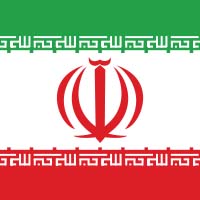

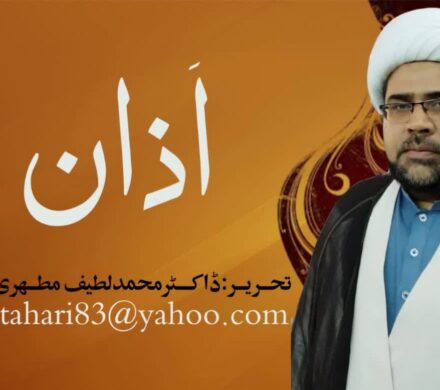
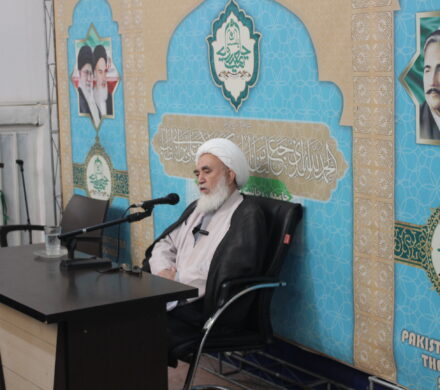
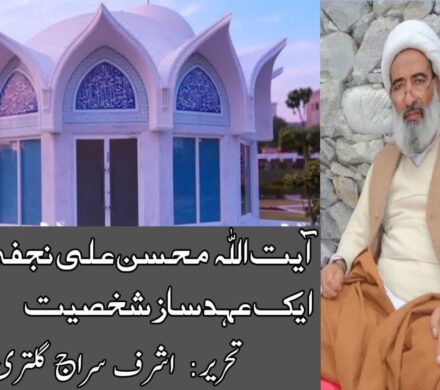



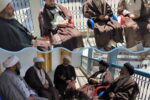



دیدگاهتان را بنویسید